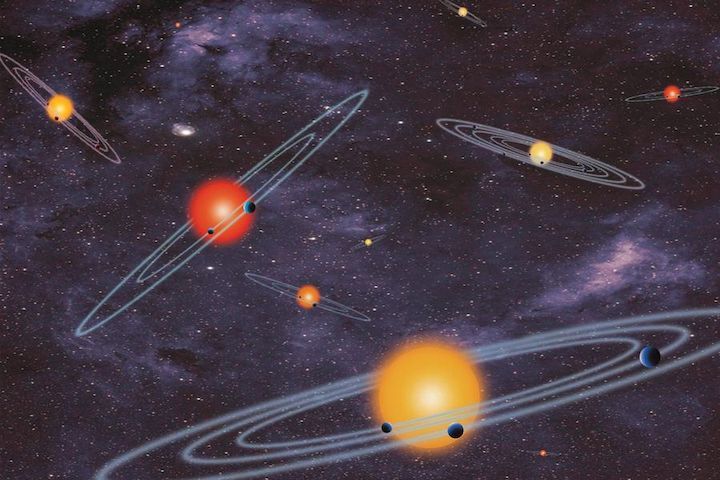21.03.2022
The identity of three, possibly four, stars has been brought into question, as researchers re-evaluate the objects' size, revealing they are far too big to be exoplanets.

Researchers identified up to four exoplanet candidates that should instead be classified as small stars using updated measurements from the European Space Agency's space-based Gaia mission. (Image credit: NASA)
Astronomers have detected at least three small stars masquerading as exoplanets, new research shows.
The three, possibly four, stars were originally discovered by NASA's Kepler Space Telescope. At the time, they were classified as exoplanets. However, a new study suggests their original classification may be a case of mistaken identity, according to a statement from the Massachusetts Institute of Technology (MIT), where most of the researchers are based.
The scientists revisited measurements of planet-hosting stars to verify the size of exoplanet candidates. This revealed three suspicious objects — known as Kepler-854b, Kepler-840b and Kepler-699b — measuring between two and four times the size of Jupiter, which is far too big to be a planet. Instead, the researchers argue they should be classified as small stars.
"Most exoplanets are Jupiter-sized or much smaller. Twice [the size of] Jupiter is already suspicious," Prajwal Niraula, lead author of the study and a graduate student in MIT's Department of Earth, Atmospheric, and Planetary Sciences, said in the statement. "Larger than that cannot be a planet, which is what we found."
The fourth star-in-disguise, known as Kepler-747b, is about 1.8 times Jupiter's size, which is comparable to the largest confirmed exoplanets. However, Kepler-747b is located relatively far from its star, which means it likely does not receive enough light to sustain itself as a planet of that size. While this doesn't definitively rule out Kepler-747b as an exoplanet candidate, the researchers are suspicious about its planetary classification.
"Overall, this study makes the current list of planets more complete," Avi Shporer, co-author of the study and a research scientist at MIT's Kavli Institute for Astrophysics and Space Research, said in the statement. "People rely on this list to study the population of planets as a whole. If you use a sample with a few interlopers, your results may be inaccurate. So, it's important that the list of planets is not contaminated."
The true identity of these stars was revealed as part of a larger effort to identify signs of tidal distortion in exoplanetary systems. The gravitational pull between two objects can influence the objects' shapes. When two objects are close to each other, the gravitational pull of each will stretch the other into an egg-shape or ellipsoid.
The amount of distortion is determined by massive the companion object is. Therefore, researchers can determine whether they are looking at a binary star system or a star-planet system based on the tidal pull observed, according to the statement.
And when the scientists looked at the latest data about Kepler-854b, the researchers found an ellipsoidal signal that was too large to be caused by a planet. Because exoplanet sizes are estimated based on comparing them to the size of the star they orbit, scientists decided to look through data gathered by the European Space Agency's space-based star-mapping mission, Gaia.
And indeed, Gaia data suggested that the star Kepler-854 is much larger than scientists had realized when the would-be exoplanet was detected. Redoing the math, the researchers determined that Kepler-854b is three times the size of Jupiter. This suggests Kepler-854b is a small star orbiting a larger host star, rather than an exoplanet.
Gaia's improved measurements prompted the researchers to recalculate the size of other suspected exoplanets orbiting stars whose size estimates have dramatically changed.
"That was a very big flag," Niraula said in the statement. "We now have three objects that are now not planets, and the fourth is likely not a planet."
Although scientists have identified nearly 5,000 exoplanets to date, the team does not expect that many more corrections will need to be made to existing exoplanet catalogs, according to the statement.
"This is a tiny correction," Shporer said. "It comes from the better understanding of stars, which is only improving all the time. So, the chances of a star's radius being so incorrect are much smaller. These misclassifications are not going to happen many times more."
Quelle. SC
